The platinum hatchetfish, Thoracocharax stellatus, is one of the more commonly imported yet mysterious species within the hatchetfish family. It appears to have an extremely wide distribution in South America. Scientific evidence exists from Argentina, Bolivia, Brazil, Colombia, Uruguay, Ecuador, Paraguay, Peru and Venezuela. So, regardless of state boundaries, these are the Paraguay/Paraná, Amazon and Orinoco river systems. We have also received specimens from many corners of this vast species range. Visually they all match each other. However, experience teaches that such large areas are not inhabited by only one species, but in fact there are several species. And indeed, in 2014, Fagner de Souza describes two additional Thoracocharax species in his doctoral thesis. However, since doctoral theses are considered “unpublished” in the scientific sense, these two species are still formally without names. One comes from the Apure and other Orinoco tributaries in Venezuela, the other from the tributaries of the Jurua and Purus rivers in Brazil. We obtain our Thoracocharax stellatus almost always from Colombia (Orinoco).
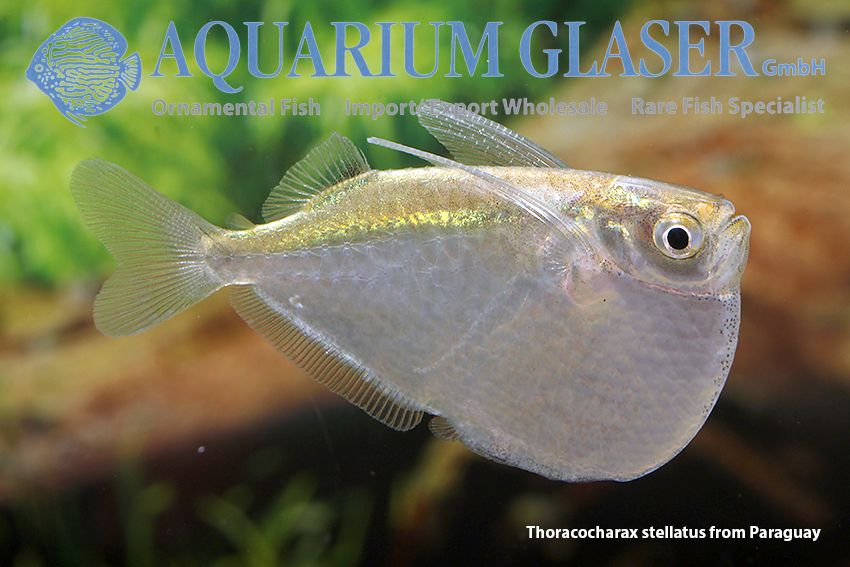
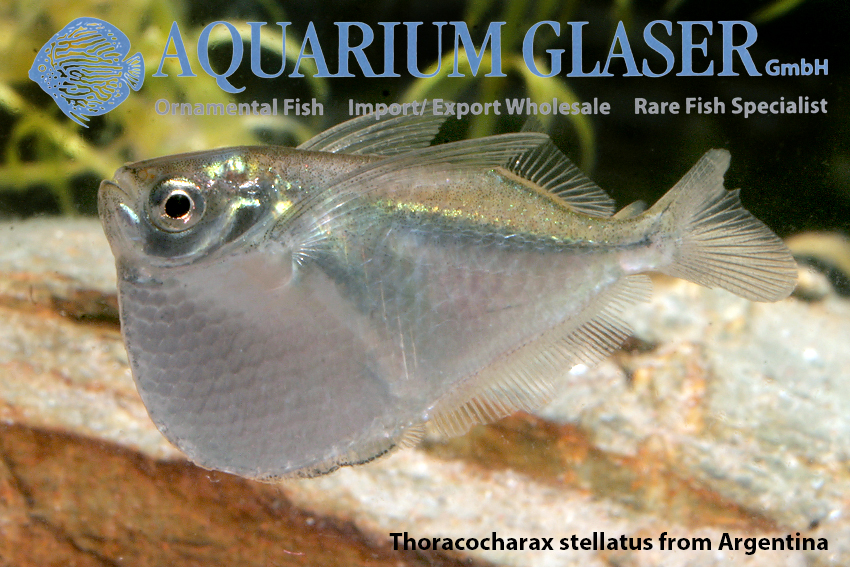
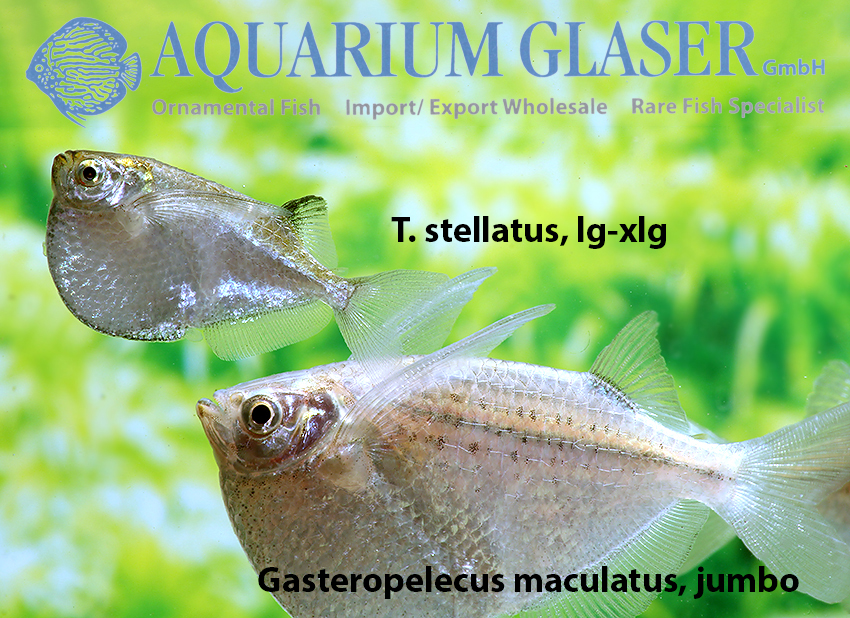
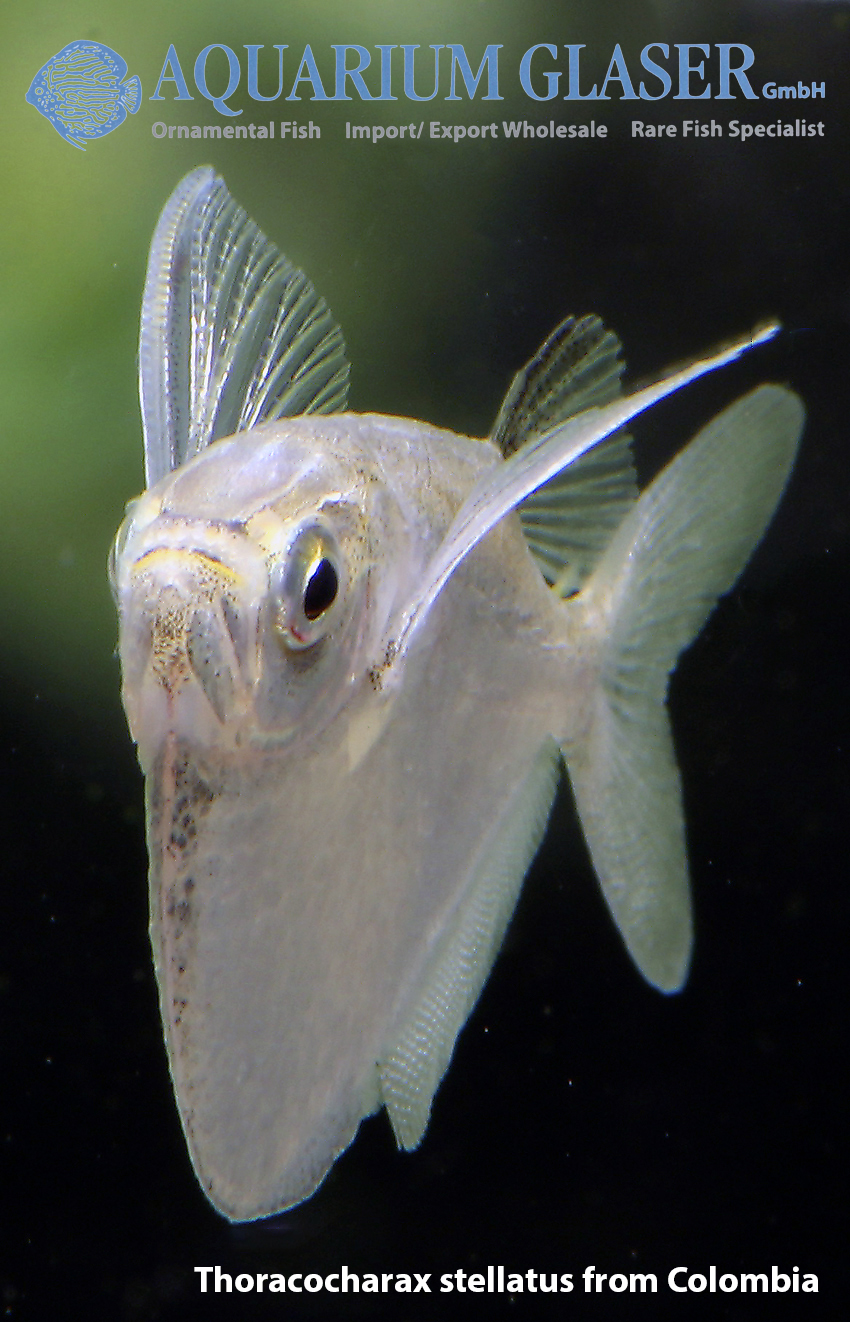
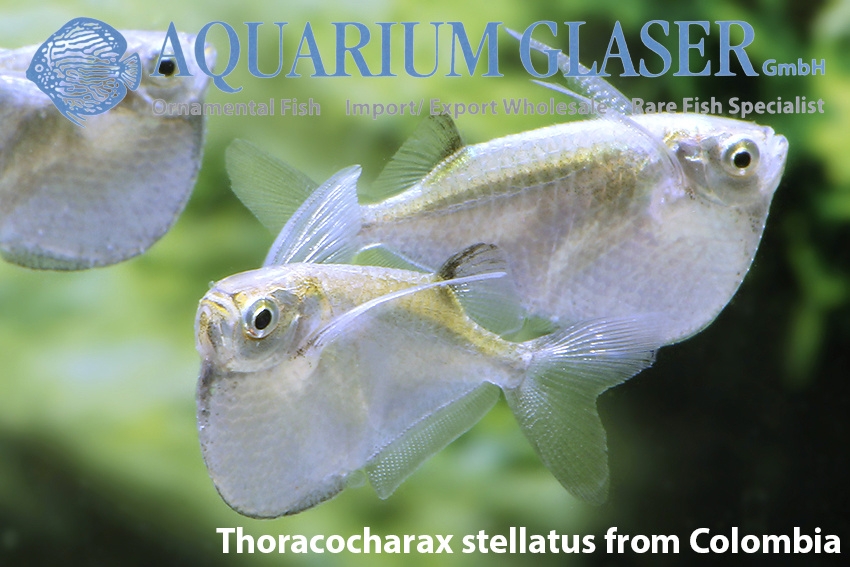
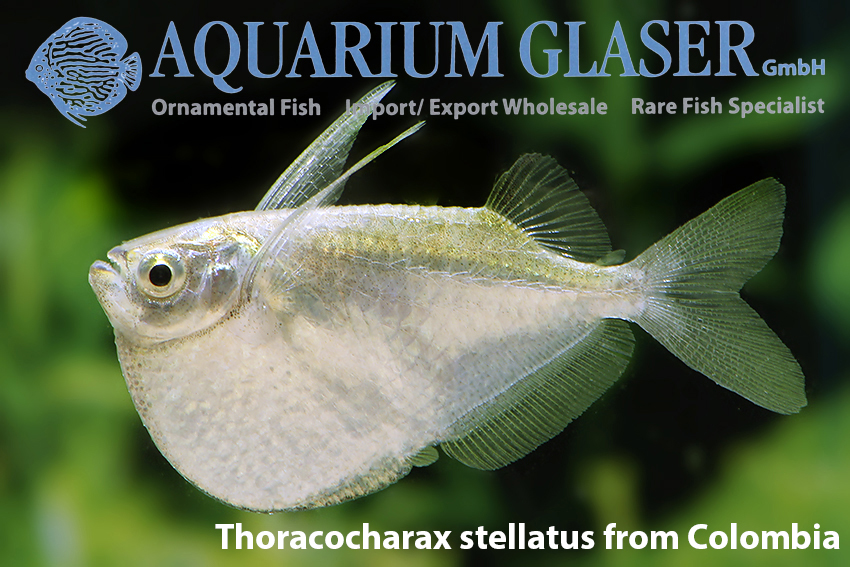
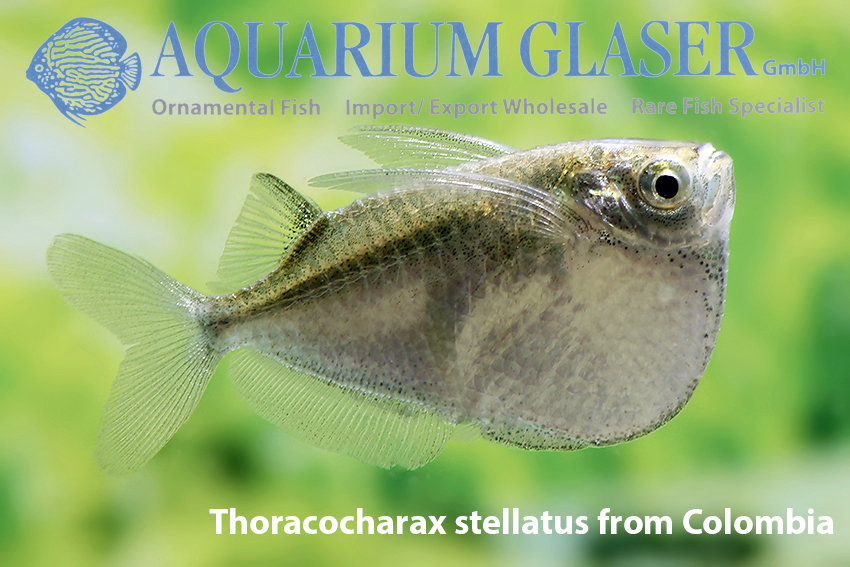
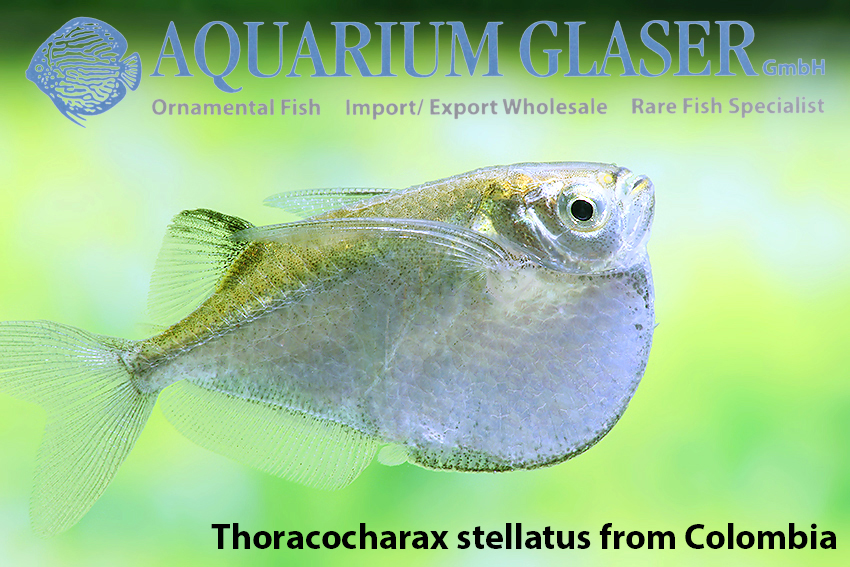
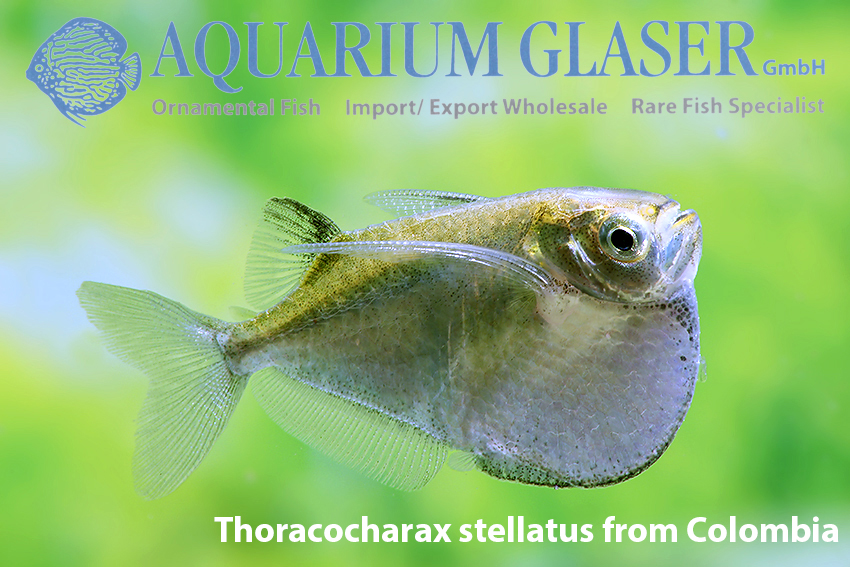
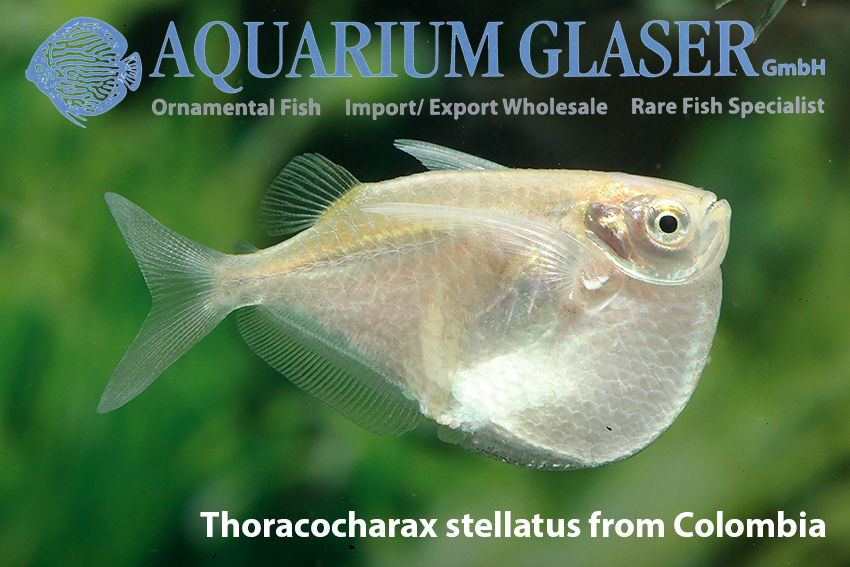
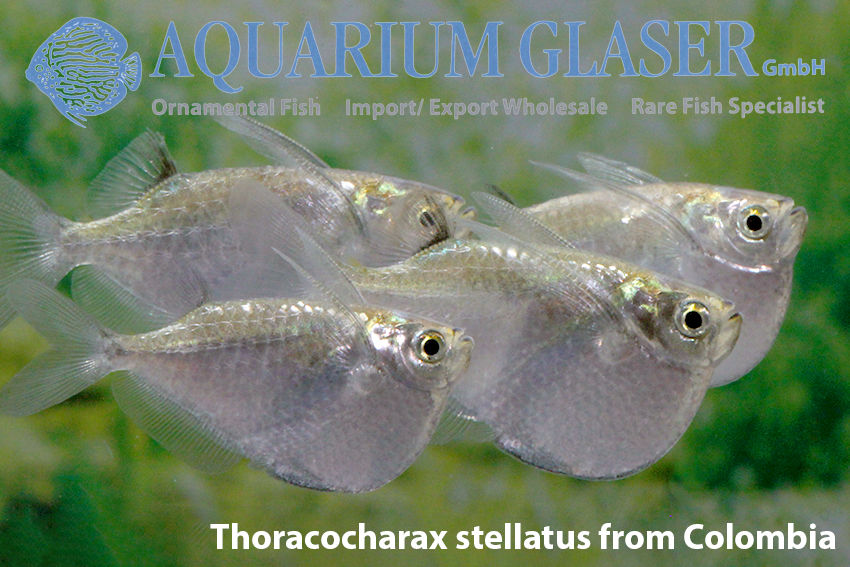
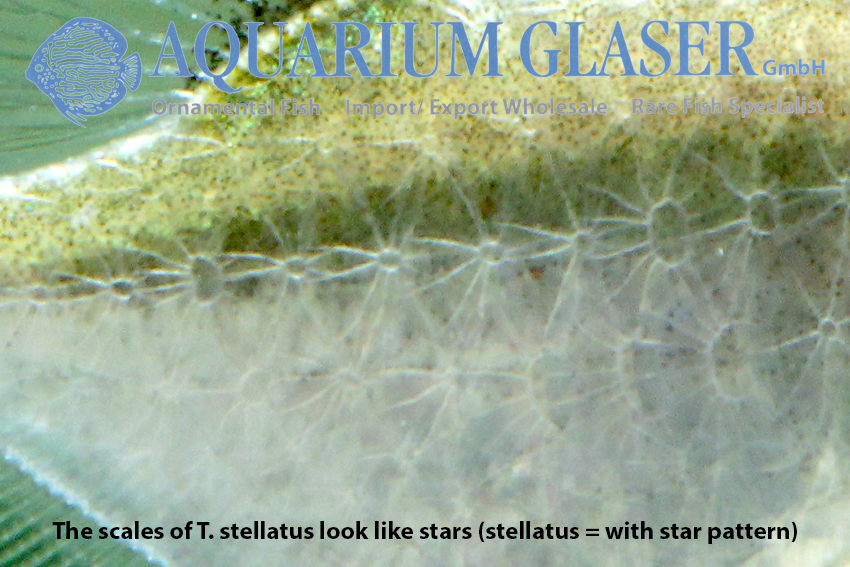
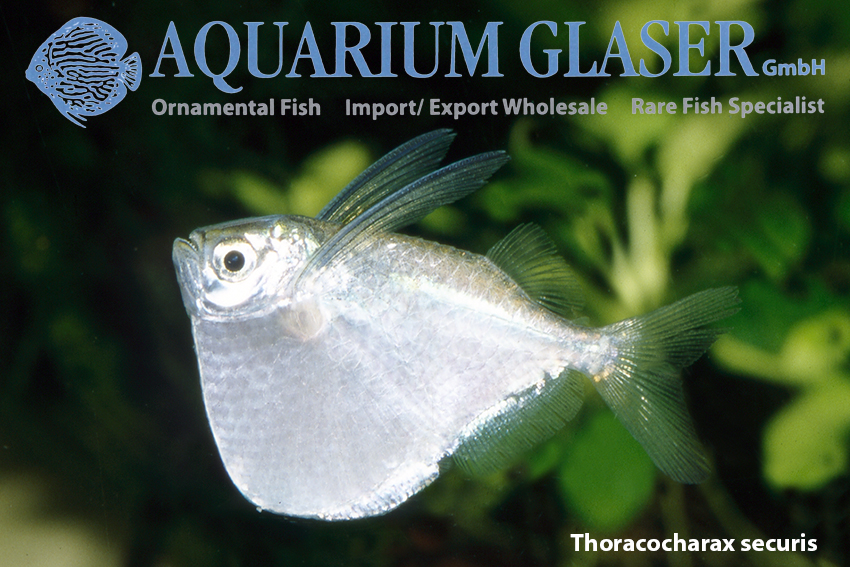
There is only one other scientifically accepted species in Thoracocharax, namely T. securis. It represents another enigma. T. securis originates from the upper Amazon basin and, according to scientific data, is often found together with T. stellatus, but it practically never appears in ornamental fish shipments, even when ordered. This already made us doubt that this species exists at all. But it does exist, we also show you here one of the very few existing live photos of this species. It differs from T. stellatus by the considerably more curved abdomen, the absence of a black spot at the base of the dorsal fin and – this is the absolutely most undoubted recognition feature – by the fact that T. stellatus has only two to three scale rows at the base of the anal fin. There T. securis has 5-6 scale rows.
The third enigma of the platinum hatchetfish is the question of the attainable final size. For T. stellatus 6.7 cm standard length (without caudal fin) is given in the scientific literature, for T. securis 6.8 cm. However, although we have seen large numbers of T. stellatus, we have never noticed specimens well over 5 cm standard length. On paper this difference looks like little, but compared to the jumbos of Gasteropelecus maculatus, Thoracocharax seem quite dainty.
As you can see, there is still a great need for research even on the supposedly commonplace ornamental fishes. The aquarists of the world can and should participate in it. A nice side effect: Platinum hatchetfishes are splendid and interesting inhabitants in the aquarium! Keep them in groups of 5 or more and feed them insect food (freeze-dried red mosquito larvae, fruit flies, aphids etc.) as often as possible, then they are hardy fish.
For our customers: the animals have code 267004 on our stock list. Please note that we supply only wholesale.
Text & photos: Frank Schäfer




